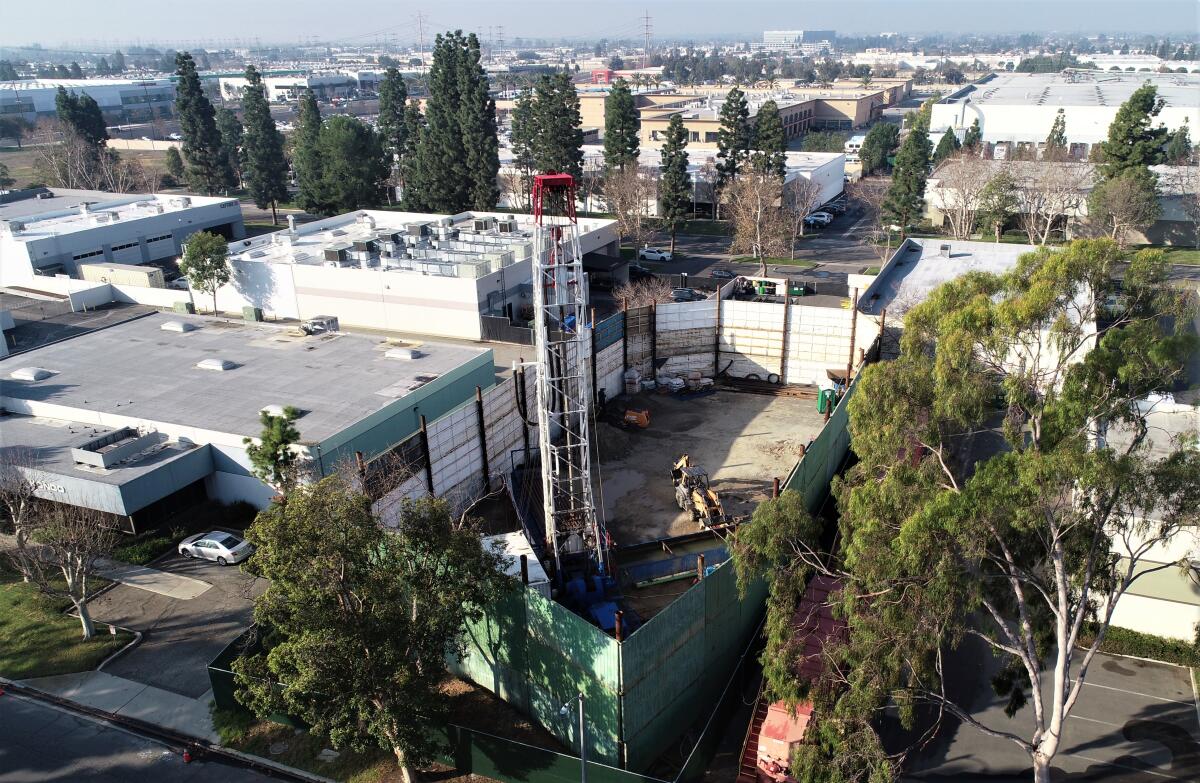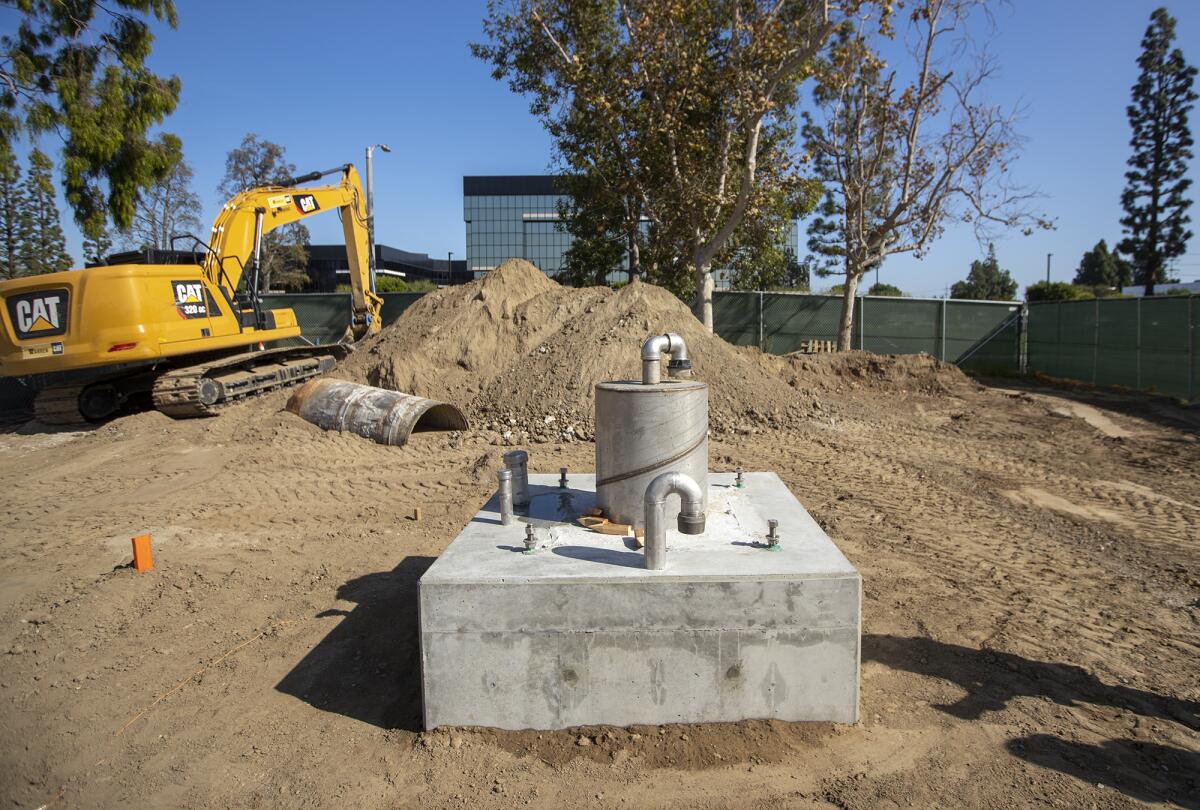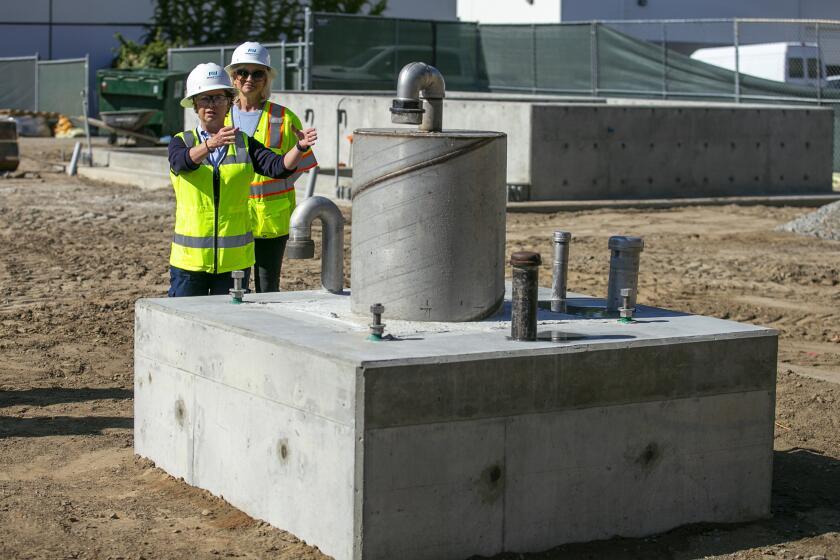Mesa Water poised to raise rates, add fee to property taxes to fund capital improvements

Mesa Water District is poised to consider a five-year basic rate increase ranging from 5% to 8% annually that would take effect next year, but a proposal to add a capital charge onto ratepayers’ property tax bills doesn’t sit well with some.
Public hearings set for Wednesday, both in-person and watchable on Zoom, will allow the public to weigh in on the changes, which officials say are necessary to support $70 million in capital improvement projects being undertaken to ensure reliability and capacity and help the district meet increasing labor, energy and replenishment costs.
Mesa Water last increased its rates in 2017 in a five-year schedule that ends this year. Proposed increases would apply to ratepayers’ basic charges, water use rates and incidental fire line service rates.

“Almost every city and water district has an annual increase to keep up with inflation,” General Manager Paul E. Shoenberger said in an interview Thursday. “Mesa Water District is going through a process to look at its rates and adjust our revenue to make sure we’re covering our costs.”
Board members will also discuss Wednesday shifting a portion of customers’ basic charges away from regular bill cycles toward an assessment that would be collected semi-annually by the county treasurer-tax collector as part of property owners’ tax bills.
Shoenberger clarified the charge would not constitute a new tax but would instead create a fixed funding source for Mesa Water to operate, maintain and repair the water system, as opposed to rates tied to fluctuating consumer use.
“In the past we’ve had severe reductions, either through voluntary conservation or state mandates. That does reduce our revenue for operations, and it also reduces our revenue for capital [improvements],” he said. “This makes that revenue more stable.”
Funded by a $1.6-million grant from the state’s Department of Water Resources, two potable water wells under construction in Santa Ana should be completed by June 2022.
Officials say placing the assessment on the tax rolls would appropriately ask property owners to fund long-term capital investments that benefit their property values, rather than bill-paying tenants.
Aspects of the plan — summarized in a mailer sent to about 29,500 ratepayers in November and explained in a consultant survey available on the district’s website — shed light on what the increases might look like for the owner of a single-family residence of average water use.
Such a homeowner will end up paying roughly $860 in 2022. Under the proposal, with the new capital charge in place, that annual amount would increase to about $976 in 2023 and $1,056 the following year, until the homeowner was paying $1,219 in 2027.
Wendy Leece, a homeowner and former city councilwoman, questioned the district’s rationale, saying it doesn’t seem right to add tax burdens without a vote by the people.
She also said Mesa Water didn’t give residents enough time to digest the complicated plan, adding reports weren’t made available until late December, and doesn’t offer remote viewing of board meetings or archive meeting videos to reference.
Mesa Water District board members voted unanimously Thursday night to raise water rates by as much as 5% a year for the next five years, despite objections from some customers who implored the agency to find ways to tighten its belt before asking residents to pay more.
“This is a major change in billing, and they have not given us fair warning,” she said. “To impose this major change is grossly unfair and is an unnecessary burden, even if it’s justified, on people who have been conserving water.”
Adam Ereth, who unsuccessfully campaigned for a seat on Mesa Water’s Board of Directors in 2020, said the proposal’s documentation is difficult to decipher.
“Give me the bottom line — give me something that’s simple and easy to understand.”
Now a planning commissioner, Ereth, who spoke for this story as a resident, said the district took out a bank loan for its recent capital improvements and imposed prior rate increases to obtain a AAA credit rating and lower interest rates, instead of attempting to pass a bond.
“These big capital improvement projects should go before the voters,” he said. “It’s good policy to put something on the ballot, and let voters decide what to do.”
Those who oppose the proposals must write a letter to Mesa Water District for each separate item, expressing their opposition and including their street address or assessor’s parcel number and a signature. If a majority of ratepayers — in this case roughly 12,500 — protest, the plan will not move forward.
Shoenberger confirmed Thursday only four letters of protest had been received.
Wednesday’s meeting takes place at 4:30 p.m., at 1965 Placentia Ave., in Costa Mesa. Residents can watch and provide comments via Zoom. For details, visit mesawater.org.
All the latest on Orange County from Orange County.
Get our free TimesOC newsletter.
You may occasionally receive promotional content from the Daily Pilot.





